Gallery Post Format Title
2 Responses
Leave a Reply
You must be logged in to post a comment.
You must be logged in to post a comment.
Are you sure you want to submit this abstract?
Please confirm your registration:

Dr. Nichols is also an internationally recognized clinician-scientist with long-standing track record of research development, oversight, and scientific discovery. He has over 180 publications and an h-index of 50.
He maintains an ocular surface research group with full scale capabilities for conducting clinical and basic research receiving funding from the National Eye Institute (NEI).
His research unit employs state-of-the art facilities and equipment for the study of dry eye, meibomian gland disease, and pharmaceutical and medical device development and testing.
He has served on numerous medical/advisory boards and boards of directors. His awards include three Ezell Fellowships, the Korb award, the Borish and Max Schapero Awards, the Fry Medal and Westheimer lecturer, and he is a Distinguished Scholar and Fellow of the National Academies of Practice. Lastly, he is editor-in-chief of Contact Lens Spectrum, the world's leading journal on contact lenses.
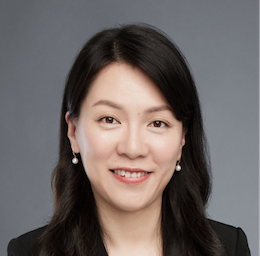
Professor, Chief Physician of Ophthalmology, Doctoral Supervisor and Director of Department of Refraction and Myopia Control, Zhongshan Ophthalmic Center (ZOC),Sun Yat-Sen University
Prof. Yang is currently the deputy leader of Optometry and Vision Science Group, Ophthalmology Branch, and Chinese Medical Society. Her research interests include orthokeratology, myopia control, and pediatrics ophthalmology. Yang has obtained more than 20 research funds on projects and has been published in professional journals in these fields. Prof. Yang is a fellow of the International Association of Contact lens educators (FIACLE), a fellow of the International Academic Orthokeratology and Myopia Control (FIAOMC ), and the Fellowship Chair, Asia Section of IAOMC.
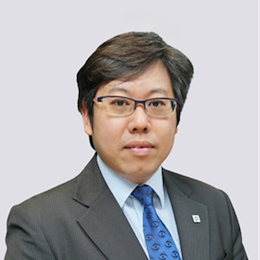
Dr Thomas Lam completed his undergraduate training with first-class honours in Optometry from PolyU. He was awarded a PhD scholarship to pursue his study on proteomics and animal myopia. He is among the first to pursue global retinal protein profiling and novel protein regulations in the chick myopia model using a mass spectrometry approach. Dr Lam started his academic career in 2008 as a Lecturer in the School of Optometry in PolyU and obtained his first competitive research grant from the RGC in the following year. In 2010, he relocated to Singapore and helped establish the first BSc Optometry degree programme offered by the University of Manchester (UK). He returned to Hong Kong in 2012 and he is currently an Associate Professor of the School of Optometry and serves as Director of PolyU Shenzhen centralized animal facility and Associate Director of PolyU centralized animal facility.
Dr Lam has a good mix of academic and clinical experience. He obtained his fellowship of the American Academy of Optometry (FAAO) in 2009. He has more than 15 years experience in clinical supervision in various optometry clinics locally and overseas. He also actively serves in the profession as an editorial board member of international journals, an organizing committee member of international conferences, a councilor of The Hong Kong Society of Professional Optometrists (HKSPO), and a member of The Optometrists Board of Hong Kong, The Government of the Hong Kong Special Administrative Region. He is currently a PI of Centre for Eye and Vision Research (CEVR), HK Science Park, Research Centre for SHARP Vision, PolyU, Research Centre for Chinese Medicine Innovation (RCMI), PolyU and Shenzhen Research Institute, PolyU.

Lyndon Jones is a Professor at the School of Optometry and Vision Science, University Professor and Director of the Centre for Ocular Research & Education (CORE) at the University of Waterloo. His research interests primarily focus on the interaction of novel and existing contact lens materials with the ocular environment, dry eye and the development of novel materials for ocular drug delivery. He has authored over 500 refereed and professional papers, one text-book and given over 1200 invited lectures at conferences worldwide, in over 40 countries.

Dr Alex Ng is a specialist in Ophthalmology at the Hong Kong Ophthalmic Associates (private practice). His research interests involved cataract surgery, refractive surgery, dry eye disease management and children myopia control. He has over 80 publications in peer-reviewed journals and has delivered over 70 invited talks and instruction courses in both local and international ophthalmology conferences.
He was awarded the Asia Cornea Society Santen Asia Educational Observership Grant Award in 2016, the Distinguished Young Fellow Award of the College of Ophthalmologists of Hong Kong in 2016, the Asia-Pacific Academy of Ophthalmology (APAO) & Singapore Society of Ophthalmology Young Ophthalmologist Award in 2017, the APAO Achievement Award in 2019, and the Japanese Ophthalmological Society (JOS) International Young Investigator Award in 2020. He is also an alumni of the APAO Leadership Development Program (class 2020-21).
Dr Ng currently serves as the honorary secretary at the Hong Kong Ophthalmological Society, editor of the Hong Kong Journal of Ophthalmology, visiting consultant of the Lifeline Express and Associate Ophthalmologist at Orbis.

Noel A. Brennan, MScOptom, PhD, FAAO, is an internationally recognized scientist, author, inventor, and educator. Currently, a research fellow at Johnson & Johnson, he formerly served on the academic staff at the University of Melbourne and was a visiting scholar at Stanford University's Division of Ophthalmology, Department of Surgery, courtesy of a Senior Fulbright scholarship, before directing an eponymous boutique research consulting firm for a number of years. A recognized expert in the field of contact lenses, he now devotes his time to unraveling the mysteries of myopia through optical design, experimentation, data collation, and modeling. He is the designer of the Abiliti 1-Day Soft Therapeutic Lenses for Myopia Management, a named inventor on over 25 US patents, and is coauthor of over 400 papers, including peer-reviewed scientific manuscripts, refereed conference abstracts, educational articles, and industry reports.
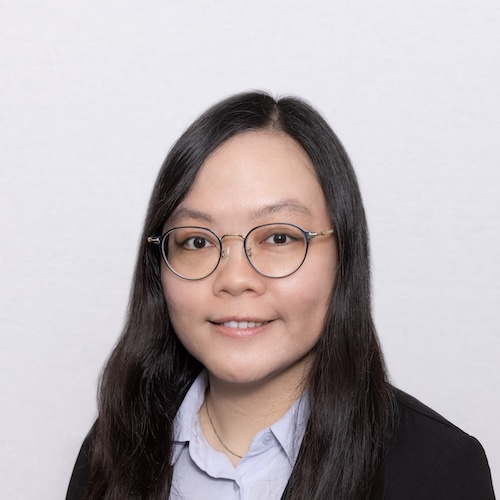
Ms Gigi Yee graduated from The Hong Kong Polytechnic University with a Bachelor of Science degree in Optometry in 2011. After completing a two- year residency program specialized in contact lens, anterior eye and refractive technology, she joined the School of Optometry in Hong Kong Polytechnic University as Clinical Optometrist. Later on she obtained the Master of Science in Optometry with distinction in 2015. She is a fellow of the British Contact Lens Association.
Ms Yee's clinical interests include anterior eye and specialty contact lens such as orthokeratology and scleral lens. She is experienced in local and international conference presentation related to specialty lens fitting, including workshops and invited sharing. She actively participates in clinical teaching for undergraduate and continuing education courses. She is one of the mentors in the Optometry residency program specialized in Anterior Eye and Specialty Contact Lenses, and Myopia management.
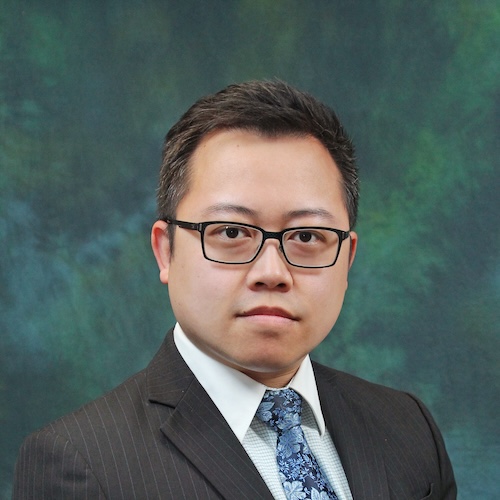
Mr. Jimmy Tse graduated from The Hong Kong Polytechnic University (PolyU) with a BSc (Hons) in Optometry. After completing a two-year residency programme specializing in contact lens and anterior segment disease, he obtained his fellowship from the American Academy of Optometry (FAAO) and the fellowship from the British Contact Lens Association (FBCLA). Also, he later completed his Master of Science in Optometry degree with distinction from PolyU and was included on the Dean’s Honours List. Currently, he is an Assistant Professor of Practice at the School of Optometry and the team leader of the Specialty Contact Lens and Dry Eye Management team at the Optometry Clinic.
Mr. Tse's clinical interests include ocular surface disease management and specialty contact lens fitting. He is actively involved in didactic and clinical teaching in both undergraduate and continuing education programs. Additionally, he serves as a mentor in the residency programme, specializing in anterior eye disease and specialty contact lenses.

About Vision at Johnson & Johnson
Johnson & Johnson has a deep legacy in developing transformational new products that improve the health of patients’ eyes. As a global leader in eye-health, we have a bold ambition: Vision Made Possible – and are paving the way for a new future of eye health to support the full spectrum of pediatric, developed and mature eyes. Through cutting-edge innovation, scientific expertise, and advanced technologies, we are revolutionizing the way people see and experience the world. At every step of the eye health journey – from investigational gene therapies for retinal diseases to contact lenses and refractive and cataract surgical solutions – we stand as a trusted partner with the goal of making vision possible for customers and patients. Visit us at jjvision.com, follow @JNJVision on Twitter, Johnson & Johnson Vision on LinkedIn, and @JNJVision on Facebook.

About CooperVision
CooperVision, a division of CooperCompanies (Nasdaq:COO), is one of the world’s leading manufacturers of contact lenses. The company produces a full array of daily disposable, two-week and monthly soft contact lenses that feature advanced materials and optics, and premium rigid gas permeable lenses for orthokeratology and scleral designs. CooperVision has a strong heritage of addressing the toughest vision challenges such as astigmatism, presbyopia, childhood myopia, and highly irregular corneas; and offers the most complete portfolio of spherical, toric and multifocal products available. Through a combination of innovative products and focused practitioner support, the company brings a refreshing perspective to the marketplace, creating real advantages for customers and wearers. For more information, visit www.coopervision.com
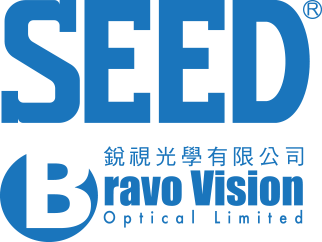
Bravo Vision Optical Limited (Distributor of SEED in Hong Kong & Macau)
With a legacy dating back to 1951, SEED embarked on pioneering research in contact lenses. Over the ensuing half-century, we harnessed cutting-edge technologies and fostered unwavering customer trust through our contact lens innovations. Our expertise extends beyond lenses, as we’ve introduced a diverse range of eye-related products to the market. Guided by our corporate philosophy of “Supporting Your Vision with Japanese Quality,” we operate across diversified business domains. As we continue to nurture vision, we remain steadfast in planting "SEED"s in new frontiers, reaping the fruits of our unwavering efforts. Since 2013, Bravo Vision Optical Limited has proudly served as the distributor of SEED in Hong Kong and Macau.
For more information, please visit: https://bv-optical.com/

At Loyal Tech Group, we are constantly striving to improve and expand our product range to meet the evolving needs of our customers. Our aim is to become a trusted partner for ophthalmic professionals by providing top-notch products and unparalleled service.
For more information, please visit: http://www.loyaltech.com.hk/

Headquartered in Singapore, Oculus Private Limited and its group of subsidiaries have over 30 years of experience in manufacturing and supplying high quality contact lens and contact lens care products to eye care practitioners and optical retailers.
Oculus is focused on the innovation, manufacturing and marketing of cosmetic contact lenses and has established FreshKon® as a leading brand of cosmetic contact lens in South East Asia and China. The Oculus group also offers disposable clear contact lenses under FreshKon® brand, specialty contact lens products such as gas permeable lenses under OCUVIQ brand and soft toric contact lenses under Flexcon brand. Oculus’s products are manufactured in accordance to the quality assurance system ISO 13485 requirements and meet the Medical Devices Directive 93/42/EEC.
Oculus has a direct presence in Singapore, China, Hong Kong, Malaysia, Indonesia, and Taiwan, with a network of international distribution partners, Oculus’s products are sold in over 50 countries globally.

Alcon is the global leader in eye care, dedicated to helping people see brilliantly. With an over 75-year heritage, we are the largest eye care device company in the world, with complementary businesses in Surgical and Vision Care. Being a truly global company, we work in over 50 countries and serve patients in more than 140 countries. We have a long history of industry firsts, and each year we commit a substantial amount in Research and Development to meet customer needs and patient demands.
To learn more about Alcon: Alcon Eye Care for Healthcare Professionals | MyAlcon
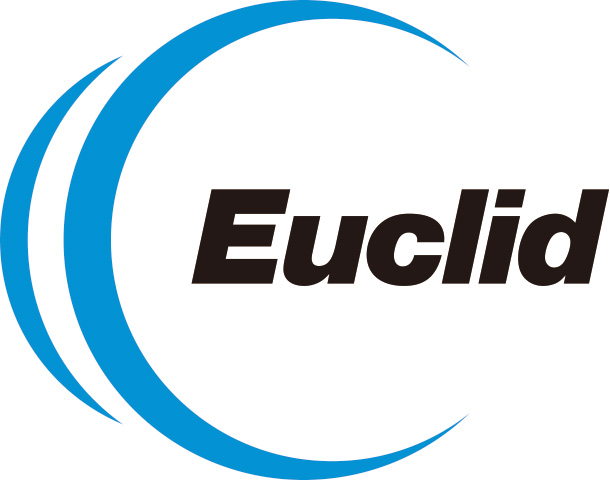
About Euclid Vision Corporation
Euclid Vision Corporation is a world leader in myopia management and manufacturer of advanced orthokeratology lens products. With headquarters in Virginia, USA, and offices in Shanghai and Beijing, China, Euclid is leading the efforts in myopia management across the globe.
Multiple clinical studies worldwide by prestigious independent researchers have proven the effectiveness of orthokeratology, and specifically the Euclid Emerald lens, on slowing the progression of myopia. The Euclid Emerald lens design has received FDA approval in the U.S., South Korea, Japan, Taiwan, China and CE mark for Europe. Nearly three million successfully treated Ortho-K patients in the modern Euclid Emerald family of lenses, has proven them to be easy to fit while providing highly effective myopia reduction.
At Euclid, our mission is to improve the lives of patients globally by providing the best technology and highest quality solutions for myopia management. On the front lines of the Myopia Epidemic since 1995, Euclid is making a difference around the world by supporting the development of optometry, eye health promotion and myopia management in children worldwide.

About Skyview
Since launched in 1987, Skyview had become accepted as a principal supplier to the optical and ophthalmic profession.
Our reputation is built upon the reliable supply of an extensive range of high quality instruments and machines in conjunction with world class partners.
OUR VISION
To be the best optical instrument provider thus assisting to enhance the service quality of the Ophthalmologist and Optometrist in the area we served by bringing in New and Advance technology and latest innovated Ophthalmic and Optical devices resulting in offer with better choice of treatment and service to the people.
OUR MISSION
We strive to act with honesty, openness, fairness and integrity to help to enhance the service quality and support of the Optical and Ophthalmic field in the area we served. We provide opportunities for the growth and enrichment to our employees, our business partners and the communities in which we operate.
Observation on the clinical effect of transcutaneous electrical acupoint stimulation(TEAS) in the treatment of dry eye
YongQi Mao, Eye School of Chengdu University of Traditional Chinese Medicine
Objective: To investigate the clinical efficacy and safety of transcutaneous electrical acupoint stimulation(TEAS)in the treatment of dry eye.
Methods: 60 patients meeting the diagnostic criteria of dry eye were randomly divided into test group (30 cases) and control group (30 cases). The experimental group was treated with transcutaneous electrical acupoint stimulation(TEAS), the current was applied to the acupoints around the eyes (temples and foot Shaoyang gallbladder meridian), and the experimental group was treated with traditional acupuncture therapy. The treatment period was 2 weeks, 2 times a week. Symptom improvement, ocular surface disease index (OSDI), tear secretion, BUT and other indicators were recorded during the period.
Results: After treatment, dry eye symptoms were significantly improved in most patients. Dry eyes, foreign body sensation, burning sensation and other discomfort symptoms reduced or disappeared; Ocular surface disease index (OSDI) changes; Increased tear secretion; BUT was increased (P<0.05).
Conclusion: transcutaneous electrical acupoint stimulation(TEAS)is effective and safe in the treatment of dry eye. The treatment effectively improves the symptoms of dry eye patients by promoting blood circulation in the eye, increasing tear secretion, prolonging BUT, relieving ocular muscle tension, regulating nerve conduction function and other mechanisms.
Advances in tear biomarkers in the study of diabetes and its complications
Wenyan Peng, Eye School of Chengdu University of Traditional Chinese Medicine
Tears play a crucial role in maintaining the health and function of the ocular surface as they cover the surface of the eye. Their composition is complex. Compared to other bodily fluids, tears are easier to collect, non-invasive, and painless. These characteristics make tears an ideal source of biomarkers for diagnosing and monitoring various diseases, especially systemic metabolic disorders such as diabetes and its complications.
Diabetes is a metabolic disease, and there is currently no fundamental cure. Early diagnosis and monitoring of diabetes is crucial for patient treatment and prognosis. In recent years, biomarkers in tear fluid have garnered significant attention from researchers due to their unique advantages. Studies have shown that various metabolites are upregulated in the tear fluid of diabetic patients, related to the pathogenesis of diabetes. For example, niacin levels are elevated in the tears of diabetic patients. Additionally, the levels of the pro-inflammatory cytokine TNF-α in the tear fluid of patients with diabetic retinopathy (DR) are increased, which not only aids in the early diagnosis of DR but also helps predict the severity of the disease. The correlation between tear fluid levels of Nerve Growth Factor (NGF) and diabetic nephropathy, Neuropeptide Y (NPY) and diabetic peripheral microangiopathy, and MMP-9 and diabetic peripheral neuropathy (DPN) suggests the potential value of tear fluid biomarkers for the prediction and diagnosis of diabetic complications.
Despite the potential of tear biomarkers in the diagnosis and monitoring of diabetes and its complications, their clinical application still faces challenges. For instance, tear samples are often small and technically demanding to collect and detect, limiting their widespread use. However, with the advancement of analytical techniques, in the future, tear analysis is expected to become a routine tool for detecting the diagnosis and monitoring of diabetes and its complications, and to play a more important role in the management of diabetes.
Corneal endothelium response to long-term wear of daily disposable hydrogel soft contact lenses through childhood
Tacy Song, CooperVision International Ltd
Purpose: Emerging evidence has indicated that specially designed daily disposable soft contact lenses (SCL) can slow down myopia progression. This study investigated the long-term impact of hydrogel SCL on corneal endothelium and corneal morphological characteristics in children.
Method: Twenty participants (mean age: 20.6 ± 1.5 years) who wore daily disposable SCL (omafilcon A) for myopia correction or treatment from ages 8-12 years and twenty age-matched controls without contact lens experience were recruited. The central corneal endothelium was photographed from each eye with a non-contact specular biomicroscope. A minimum of 100 contiguous cells, marked manually on each image using the centre-dot method, was analysed with built-in computer algorithms. Average values of endothelial cell density (ECD), average cell area (ACA), coefficient of variation of cell area (CV), percentage of hexagonal cells (HEX), and central corneal thickness (CCT) were obtained from three images of each eye.
Results: Intra-class correlation indicated a strong correlation between the two eyes (ICC ≥ 0.9). Data from both eyes were averaged and analysed using an independent t-test. No significant difference was found between the two groups in average ECD (control vs SCL: 3125 ± 197 vs 3092 ± 227 cells/mm2, p>0.05), ACA (320 ± 22 vs 325 ± 25 µm2, p>0.05), HEX (68 ± 5 vs 66 ± 7 %) and CCT (555 ± 22 vs 552 ± 28 µm, p>0.05). Although 7 out of 20 SCL participants had an average CV value higher than 30, no statistically significant difference was found between the two groups (p=0.08).
Conclusions: Our study showed wearing daily disposable hydrogel SCL full-time over 10 years caused no significant long-term impact on central corneal endothelium in children who wore SCLs from 8 years of age, who had good contact lens habits and regular contact lens aftercare.
Material Dependence of Evaporative Water Loss from Hydrogel Contact Lenses
Ka Yin Chan, Johnson & Johnson
Purpose: Evaporative water loss from the front surface of a contact lens during periods of tear film break up may be a significant mode of ocular dehydration. Measurement of 22 types of CL shows that the rate of evaporation is material dependent. This work specifically addresses pervaporation which refers to water loss by the combined processes of permeation and evaporation. The experimentally measured rates are used in conjunction with a model to calculate the fraction of incoming tears lost to pervaporation.
Methods: Evaporation rates (µL/min/cm2, n=6 per material) were experimentally determined using a custom pervaporation cell with a dynamic vapor sorption instrument. Rates were measured at 35ºC and under conditions of 80%, 50%, 30% and 0% relative humidity (RH). The experimentally measured evaporation rates, along with values for the area of exposed lens polymer and exposure time between blinks, were used to create a model for evaporative loss from the lens polymer during periods of tear film break up.
Results: The lenses fall into two groups: materials with higher pervaporation rates that are strongly dependent on percent RH, and materials with lower rates that resist pervaporative loss at low humidity. Group with higher rates contains both traditional and silicone hydrogel lenses, while the group with lower rates is composed of exclusively SiHy that contain strong hydrophilic components. Modeling shows that for high pervaporation rate lenses, up to 30% or more of the incoming tears may be lost by evaporation directly from the lens surface. Water loss is significantly reduced with lower evaporation rate lenses.
Conclusions: Evaporation of water from the surface of CL is shown to be material dependent. Pervaporative loss that occurs during periods of tear film break up may be an important mode of ocular dehydration leading to CLIDE. CL materials with strong hydrophilic components reduce pervaporative loss.
New application of artificial intelligence to control myopia in orthokeratology lens
Yunhua Tang, School of Ophthalmology,Chengdu University of Traditional Chinese Medicine
Background: Myopia is an increasingly serious threat to the visual health of young people around the world, and the orthokeratology (OK) lens are widely accepted as one of the most effective means of controlling myopia, providing a safe and reversible solution to correct and slow the progression of myopia by wearing them at night. However, the fitting process is cumbersome and the effect varies between different doctors.The application of Artificial Intelligence (AI), especially Machine Learning (ML) and Deep Learning (DL), has brought innovative breakthroughs in this field. By analysing images and data information and recognising subtle patterns, they can make more accurate and faster judgments than optometrists.
Methods: We performed a comprehensive search of PubMed, Web of Science, Embase and Scopus using the keywords 'AI, artificial intelligence, machine learning, deep learning, natural language processing, computer vision, generative AI' combined with 'orthokeratology'. A total of 147 articles were found and 21 articles were included after full-text analysis.
Results: ML and DL built prediction models based on corneal topographic map, axial length (AL), spherical equivalent refractive error (SER) and other biological characteristics to achieve the accuracy and personalization of OK lens matching, and provide a more effective myopia prevention and treatment scheme for the clinic.
Discussion: We retrospectively analyzed the current status and potential transformative impact of the application of ML and DL in AI in the control of myopia with OK lenses. The application of ML and DL in the clinical practice of controlling myopia with OK lenses has improved the accuracy and efficiency of fitting, and has shown great potential in assisting optometrists to determine trial lenses, predict correction effects, and achieve personalized treatment. We emphasized its potential to improve market shortages, and also explored in depth the challenges of integrating it into clinical practice and research.
Two-year myopia control efficacy of a dual reverse curve orthokeratology lens design in highly myopic children
Yajing Yang, School of Optometry, The Hong Kong Polytechnic University, Hong Kong
Objectives: To investigate the rate of axial elongation (AE) and associated factors in highly myopic children treated with dual reverse curve (RC) orthokeratology (ortho-k) lenses.
Methods: Chinese children aged 7 to 13 years, with myopia ≤ -5.00 D and astigmatism ≥ -2.00 D, were assigned to either a dual RC design targeted for full correction (study) or a conventional design with -4.00 D target (control). Both groups wore single-vision spectacles to correct residual refraction during the daytime. Generalized estimated equation (GEE) model analyses were used to examine the changes in AL and ChT over time and between groups, accounting for inter-eye correlations. Some participants discontinued lens wear for over one month due to microcysts, which was considered discontinuation effect. Another GEE model analysis using the data from all the visits was used to examine the risk factors for AE, adjusting for age, sex, treatment group, inter-eye correction, baseline AL and ChT, ChT changes, and discontinuation effect.
Results: Thirty participants completed the two-year follow-up (control: 20 vs study: 10). After two years, AE was comparable between groups (0.12 ± 0.05 vs 0.14 ± 0.07 mm). Thirteen participants who discontinued temporarily for over one month during the study period demonstrated greater AE than those who did not (0.19 vs 0.08 mm). At the end of the study, there was no significant difference in the mean ChT change between groups (10.4 ± 5.1 vs 15.8 ± 5.4 µm). GEE analysis indicated that older age, greater increases in ChT, and continuous treatment were significantly associated with less AE.
Conclusion: The dual RC ortho-k design targeted for greater refractive corrections achieved good myopia control efficacy in highly myopic children, comparable to the conventional design. Younger age, less increase in ChT, and temporary lens wear discontinuation (interruption) over one month during treatment may accelerate myopia progression.
Investigation of the mechanism of low-level red light therapy on hyperosmolar-induced human corneal epithelial cells
Yutong Jin, Center for Eye and Vision Research Limited (CEVR)
Objective: Low-Level Red Light therapy has emerged as a potential non-invasive option for managing dry eye disease, yet its underlying mechanisms remain unclear. Thus, this study aims to investigate the impact of red light on the functionalities of human corneal epithelial cells (hCECs).
Methods: An immortalized human corneal epithelial cell line was used in this study. Cells were cultured in either normal osmolar media (315 mOsm/L) or hyperosmolar media (465 mOsm/L) and exposed to LED red light (RL, 620 nm with 2500 lux or 0.88 mW, 5 times at 5-minute intervals over 24 hours). There were 4 groups, cells in normal osmolar media (C-N), cells in hyperosmolar media (C-HS), cells exposed to LED light in normal osmolar media (RL-N), and cells exposed to LED light in hyperosmolar media (RL-HS). Cell viability (annexin V and propidium iodide), intracellular ROS production (DCFH-DA), mitochondrial ROS generation (MitoSox), and their inflammatory state (anti-HLA-DR antibody) were assessed through flow cytometry.
Results: The expressions of annexin V and propidium iodide on hCECs decreased significantly sorely in the RL-N compared to the C-N group (p < 0.022). Additionally, intracellular ROS levels increased significantly in the RL-N compared to the C-N group (p = 0.023). Mitochondrial ROS generation was significantly increased in RL-C and RL-HS groups compared to their controls (p < 0.027). HLA-DR expression decreased significantly in RL-HS compared to RL-N (p = 0.027), suggesting an anti-inflammatory effect of red light.
Conclusions: Low-Level Red Light may prevent cell death and enhance ROS production in hCECs under non-stressful conditions, potentially augmenting cellular functions. Exposure to RL may have a greater impact on mitochondrial activities given the significant increase in mitochondrial ROS generation in both RL-N and RL-HS groups. Further studies are needed to better understand intracellular pathways or underlying mechanisms of RL on hCECs.
Near-infrared and eye tear triggered biocidal corneal bandage as a potential approach for treatment of bacterial keratitis
Liangyu Zhou, Department of Ophthalmology, The University of Hong Kong Li Ka Shing Faculty of Medicine
Purpose: Antibiotics have been the conventional treatment for bacterial keratitis and their use has led to significant issues including antimicrobial resistance and allergic reactions. These problems have prompted the search for alternative therapies. We developed a biocidal corneal bandage that is free of antibiotics, utilizing photo-sensitive nanocomposites embedded in an enzyme-modified hydrogel. The nanocomposites and enzymes generate reactive oxygen species (ROS) to effectively disinfect bacteria. The nanocomposites release ROS when exposed to near-infrared light (NIR), and the enzymes within the hydrogel catalyze glucose present in tear fluid to produce additional ROS.
Methods: The treatment efficacy of this antibacterial bandage was evaluated through Multi-drug resistant Pseudomonas aeruginosa (MDR-PA) induced in vivo rabbit bacterial keratitis model. The colonies of bacteria were isolated from cornea of the rabbit (N=4) after treatment. The transparency of the cornea and defects of the corneal epithelial layer was also examined with slit lamp. Besides, studies on assessing the biosafety of the bandage the histology of cornea were conducted via H&E staining and Masson staining.
Results: The living colonies of the bacteria amount in cornea from rabbit model exhibited a significant reduce to (6+/-1%) (MDR-PA) after treated with the bandage. Cornea treated with the bandage exhibited more transparency and less edema compared to the infected cornea. Bandage treated cornea indicated a faster re-epithelialization compared to infected cornea. Besides, the histological staining indicated that no damage to corneal tissue was caused by treatment with the bandage.
Conclusions: The result of reduced bacterial colonies indicated that the treatment with the bandage has potential in eliminating drug-resistant bacteria on an infected cornea. Besides, the maintenance of the corneal transparency and promoted healing of corneal epithelial layer suggested that biosafety of the bandage. The in vivo results suggested that our bandage has the potential to be a treatment alternative for bacterial keratitis.
Next-Gen CL Learning Platform: Advanced Search Engine, Interactive RGP Case Studies, and More
Jimmy Tse, School of Optometry, The Hong Kong Polytechnic University
Objective: Optometry students and ECPs often face challenges in CL learning. Firstly, accessing updated contact lens information, particularly in the Hong Kong market, where data is scarce and scattered. Traditional methods like random searches or product handbooks are inefficient. Secondly, the conventional peer-dependent rigid lens learning model lacks flexibility and limits students\' learning experiences. To address these issues, we developed an integrated contact lens learning platform to provide a comprehensive and interactive resource for contact lens education.
Methods and Results:
The developed platform features:
To evaluate the platform\'s efficacy in CL teaching, two quizzes on lens-fitting grading using recorded videos were administered to students following didactic teaching, with and without platform use. Student feedback was collected via questionnaires. Among the 26 students who participated, 65.4% improved their lens-fitting grading accuracy with platform use, showing a mean accuracy increase of 19.8±26.5% (P<0.05). Most students preferred the platform over conventional teaching alone, and all found it valuable to their learning.
Conclusion: The platform enables students and ECPs to access updated contact lens product information and provides various learning tools, including rigid contact lens case series allowing for interactive learning. This enhances their educational experience and equips them with the latest product knowledge, ultimately benefiting their future practice as optometrists.
Real-world safety and performance of a novel soft contact lens for myopia management in Chinese children
Noel Brennan, Johnson & Johnson
Purpose: The safety and performance of a soft contact lens with RingBoost™ technology (RB) in Chinese children completed 6 months lens wear are being evaluated in a real-world clinical setting (Aier Eye Hospital).
Method: This is a single-site, prospective, single-arm, open-label, real-world evidence study with a minimum of 1-year study duration. Eligible participants were followed post lens fit at 1-week, 1-month, 3-month and 6-month prior to completing the 12-month follow-up for evaluation of potential adverse events, vision performance, lens fit, and lens wear compliance. Further, myopia progression is evaluated at every 6 months via measuring changes in cycloplegic autorefraction and axial length (AL).
Results: A total of 70 subjects aged 7-12 years with a mean baseline myopia of -2.21 D (SD: 0.97) were fitted with the RB lens, and 67 participants completed the 6-month follow-up. No serious or significant adverse events were reported to date. After 6 months of wearing the RB lens, mean (SD) changes from baseline in AL and spherical equivalent cycloplegic autorefraction were 0.03 (0.12) mm and -0.09 (0.30) D, respectively. Monocular distance visual acuity with the RB lens was 0.00 (0.05) and -0.03 (0.05) logMAR at initial lens fitting and 6-month follow-up, respectively. Binocular distance visual acuity at 6-month follow-up was 0.00 logMAR or better in all subjects and all eyes achieved acceptable lens fit. The mean (SD) lens wear time reported at the 6-month follow-up was 12.8 (2.0) hours per day and 6.5 (0.7) days per week. Of the 67 subjects who completed the 6-month follow-up, 98.5% had cumulative lens wear time meeting or exceeding the criterion for compliance.
Conclusion: The 6-month outcomes demonstrated excellent safety, vision and fit performance of the RB lens. Minimal AL and myopia progression were observed.
An innovative multifocal contact lens solution for presbyopia
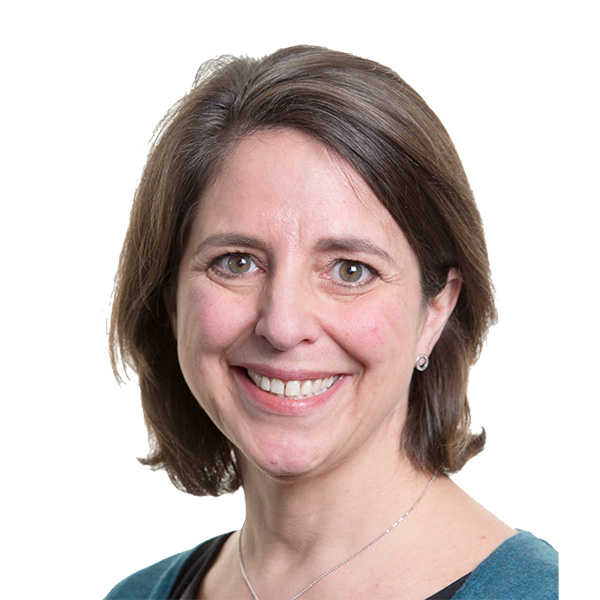
Biography
Anna graduated as an optometrist from Aston University, UK and worked in practice for several years before moving to Visioncare Research Ltd. She joined Hydron R&D in 1997 as International Clinical Manager, and then Johnson and Johnson Vision Care in 2000 where she was UK Professional Affairs Manager until 2004. After a few years dividing her time between private practice, medical writing, research and consultancy to the contact lens industry, Anna worked at Johnson and Johnson Vision from 2009 until 2018 in Global Medical Affairs. Anna joined CooperVision in 2019 as Director of Global Medical Affairs. She is Past President and Fellow of the British Contact Lens Association, and Fellow of the American Academy of Optometry. Anna has presented on contact lens and anterior eye related topics around the globe, and authored numerous publications, including being part of the teams that reviewed, synthesised and summarised evidence on contact lenses to develop the BCLA CLEAR™ (Continued Learning Evidence‐based Academic Report) global consensus publications, including the paper on presbyopia and multifocal contact lenses in 2024. She serves as a reviewer for several key vision science, anterior eye and contact lens peer-reviewed journals.
Abstract
It is estimated that around 2 billion people struggle with presbyopia globally, and while research shows that soft multifocal contact lenses (MFCLs) perform well, the number of presbyopes being prescribed them is relatively low. Concerns from eye care professionals include chair time and fit success rates, although it is known that in addition to improving patients’ vision and quality of life, MFCLs can also help to build a practice.
This presentation will demonstrate how CooperVision’s Binocular Progressive System™ found in MyDay® multifocal, and now clariti® 1 day multifocal, meets the needs commonly identified by eye care professionals and their presbyopic patients: excellent vision, comfort and health. Leveraging expertise in optical design and successful prescribing practices, the daily disposable, silicone hydrogel, MFCLs feature the innovative 3-add approach that caters to all levels of presbyopia with effective, simple fitting, optimal visual acuity at all distances, and comfortable wear.
Additionally, findings from recent publications will highlight that meeting presbyopes’ vision needs is strongly correlated with wanting to wear MFCLs and is more important than comfort needs, and that overall vision satisfaction on dispensing is a good indicator of vision satisfaction and intention to purchase after 1 week of wear to help indicate the likeliness of success.
Exploring Tear Proteomics: insights into Dry Eye and Beyond

Biography
Dr Thomas Lam completed his undergraduate training with first-class honours in Optometry from PolyU. He was awarded a PhD scholarship to pursue his study on proteomics and animal myopia. He is among the first to pursue global retinal protein profiling and novel protein regulations in the chick myopia model using a mass spectrometry approach. Dr Lam started his academic career in 2008 as a Lecturer in the School of Optometry in PolyU and obtained his first competitive research grant from the RGC in the following year. In 2010, he relocated to Singapore and helped establish the first BSc Optometry degree programme offered by the University of Manchester (UK). He returned to Hong Kong in 2012 and he is currently an Associate Professor of the School of Optometry and serves as Director of PolyU Shenzhen centralized animal facility and Associate Director of PolyU centralized animal facility.
Dr Lam has a good mix of academic and clinical experience. He obtained his fellowship of the American Academy of Optometry (FAAO) in 2009. He has more than 15 years experience in clinical supervision in various optometry clinics locally and overseas. He also actively serves in the profession as an editorial board member of international journals, an organizing committee member of international conferences, a councilor of The Hong Kong Society of Professional Optometrists (HKSPO), and a member of The Optometrists Board of Hong Kong, The Government of the Hong Kong Special Administrative Region. He is currently a PI of Centre for Eye and Vision Research (CEVR), HK Science Park, Research Centre for SHARP Vision, PolyU, Research Centre for Chinese Medicine Innovation (RCMI), PolyU and Shenzhen Research Institute, PolyU.
Abstract
Dry eye disease (DED) presents substantial challenges in clinical diagnosis and management, impacting individuals of all age groups, with a notable prevalence among Asian patients. This presentation will provide an overview of our recent clinical findings regarding the prevalence of DED in the local population, highlighting the urgent need for effective diagnostic and therapeutic strategies. Additionally, we will elucidate our novel approach in developing a tear proteomics strategy utilizing label-free mass spectrometry to evaluate the human tear proteome. By employing tear samples from our DED clinical study, alongside corneal cell cultures, we were able to identify potential new biomarkers and gain new insights into the mechanism of DED. This non-invasive tear proteomics technique has proven instrumental in assessing treatment outcomes in DED eyedrop therapy, safety concerns associated with orthokeratology lens wear, and facilitating disease detection in retinopathy of prematurity (ROP). Our findings underscore the critical role of integrating advanced molecular techniques to tackle clinical challenges related to dry eye and other ocular conditions. In addition, challenges and future perspectives for translational research in developing molecular biomarkers for clinical application will be discussed.
Fact or Fiction - Addressing some of the myths in CL practice
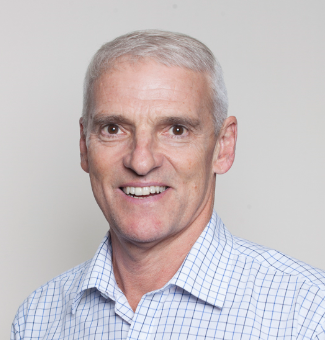
Biography
Luke obtained his Bachelor of Optometry degree from the University of New South Wales, Australia and has over 35 years’ experience in the profession. Luke leads the Medical Affairs function for Johnson & Johnson Vision Care Asia Pacific, responsible for the scientific evidence strategy in the Asia Pacific region.
Luke is Vice President of Optometry Australia, New South Wales/Australian Capital Territory division and has held a range of senior optometric leadership and management positions throughout his career, including 4 years as President of Optometry Australia, New South Wales/Australian Capital Territory, 8 years as a member of the Optometry Registration Board of Western Australia and 13 years as National Chairman of Optometry Aid Overseas..
Luke is a passionate proponent of the use of evidence-based data in optometric practice and presents extensively on contact lenses and contact lens practice.
Abstract
Optometry is a collegial profession. Eye care professionals (ECPs) are influenced by the professional judgement of their peers in ensuring they deliver the most advanced standards of patient care. An independent research agency conducted a series of surveys that investigated accepted professional beliefs of eye care professionals (ECPs) from around the world, in relation to contact lens practice.
More than 1000 ECPs were surveyed across 6 markets (US, UK, Japan, China, South Korea, Brazil) to gain insights on key perceptions.
Although many ECPs beliefs align with expectations based on current evidence, there are misconceptions in a number of areas of optometric practice. We will present the accepted professional beliefs in relation to; the role of oxygen transmissibility related to contact lens comfort and multifocal contact lens fitting. We will also provide an analysis of the evidence to provide guidance for best practice on these aspects of contact lens practice.
Impact of the digital environment on CL wear

Biography
Lyndon Jones is a Professor at the School of Optometry and Vision Science, University Professor and Director of the Centre for Ocular Research & Education (CORE) at the University of Waterloo. His research interests primarily focus on the interaction of novel and existing contact lens materials with the ocular environment, dry eye and the development of novel materials for ocular drug delivery. He has authored over 500 refereed and professional papers, one text-book and given over 1200 invited lectures at conferences worldwide, in over 40 countries.
Abstract
The recent TFOS Lifestyle reports provide a comprehensive review of how the health of the ocular surface may be impacted by how our lives are lived. The lifestyle choices made by patients can impact the health of the ocular surface and the challenges posed by a wide variety of factors such as cosmetics, nutrition, medications, digital devices and the wearing of contact lenses are all described in detail.
This evidence-based review will concentrate on how two of these factors (contact lens wear and the digital environment) can stress the ocular surface and result in patients seeking advice from their eyecare practitioner. It will review the impact of digital devices on the ocular surface and how these changes can impact the performance of contact lenses. Methods to optimise comfort and visual performance in soft lens wearers who use digital devices will be discussed, with an emphasis on the use of appropriate lens materials, frequency of replacement and optimal correction of astigmatism.
Efficacy in Myopia Control: an Omnibus Model

Biography
Noel A. Brennan, MScOptom, PhD, FAAO, is an internationally recognized scientist, author, inventor, and educator. Currently, a research fellow at Johnson & Johnson, he formerly served on the academic staff at the University of Melbourne and was a visiting scholar at Stanford University's Division of Ophthalmology, Department of Surgery, courtesy of a Senior Fulbright scholarship, before directing an eponymous boutique research consulting firm for a number of years. A recognized expert in the field of contact lenses, he now devotes his time to unraveling the mysteries of myopia through optical design, experimentation, data collation, and modeling. He is the designer of the Abiliti 1-Day Soft Therapeutic Lenses for Myopia Management, a named inventor on over 25 US patents, and is coauthor of over 400 papers, including peer-reviewed scientific manuscripts, refereed conference abstracts, educational articles, and industry reports.
Abstract
Myopia management can be confusing for clinicians. Which treatment is best? How does a practitioner compare the different treatments? Are quoted percentage values really meaningful? We have been on a quest for nearly decade to lay out an evidence-based approach to understanding these questions. The following elements have been built over this time to generate a comprehensive interpretation: axial length is the preferred metric for assessing progression; efficacy follows a pattern of absolute rather than percentage reduction in progression; there is an initial ‘boost’ of efficacy during the first year; 3-year efficacy is reliably double 1-year efficacy; there is a 15% reduction per annum in axial elongation in untreated myopes, and also in treated myopes after the first year of treatment. Combining these details leads us to predict that 6-year efficacy will be triple 1-year efficacy (expressed as mm reduction in axial elongation) and 12 years of a treatment would result in quadruple the 1-year efficacy. The maximum expected reduction in myopia progression over a decade would fall under 2D for the best treatments currently available. These predictions apply to group averages and individual variation is large. Better models are needed to predict progression during treatment of individual patients.
Advances in Myopia Management and Optimizing Intervention Strategies

Biography
Prof. Yang is currently the deputy leader of Optometry and Vision Science Group, Ophthalmology Branch, and Chinese Medical Society. Her research interests include orthokeratology, myopia control, and pediatrics ophthalmology. Yang has obtained more than 20 research funds on projects and has been published in professional journals in these fields. Prof. Yang is a fellow of the International Association of Contact lens educators (FIACLE), a fellow of the International Academic Orthokeratology and Myopia Control (FIAOMC ), and the Fellowship Chair, Asia Section of IAOMC.
Abstract
Myopia management is a rapidly moving field, with ongoing research providing more and more evidential strategies for comprehensive intervention. Efforts have been made, attempting to improve efficacy of treatments. The task of this presentation is to (1) give an overview of recent advances in this landscape, including optical interventions such as orthokeratology, low-concentration atropine, and emerging therapies such as Low-Level Red-Light Therapy (RLRL), as a background and (2) our work relevant to myopia management, which will be clarified in four main subjects: first, impacts of optics-induced visual signals on myopia control efficacy, and development and validation of the index, Areal Summed Corneal Power Shift (ASCPS), for early prediction and optimization; second, our explorations in optimizing optical interventions based on ASCPS, including orthokeratology, multifocal soft lenses, and defocus RGP lenses; third, our explorations in improving myopia control efficacy by using combined treatment strategies, including combined orthokeratology with low-concentration atropine and combined RLRL with orthokeratology as a promising potential for children who respond poor to orthokeratology; and fourth, future directions and our ongoing researches.
Refractive Surgery in 2024 - What’s Hot and What’s Not

Biography
Dr Alex Ng is a specialist in Ophthalmology at the Hong Kong Ophthalmic Associates (private practice). His research interests involved cataract surgery, refractive surgery, dry eye disease management and children myopia control. He has over 80 publications in peer-reviewed journals and has delivered over 70 invited talks and instruction courses in both local and international ophthalmology conferences.
He was awarded the Asia Cornea Society Santen Asia Educational Observership Grant Award in 2016, the Distinguished Young Fellow Award of the College of Ophthalmologists of Hong Kong in 2016, the Asia-Pacific Academy of Ophthalmology (APAO) & Singapore Society of Ophthalmology Young Ophthalmologist Award in 2017, the APAO Achievement Award in 2019, and the Japanese Ophthalmological Society (JOS) International Young Investigator Award in 2020. He is also an alumni of the APAO Leadership Development Program (class 2020-21).
Dr Ng currently serves as the honorary secretary at the Hong Kong Ophthalmological Society, editor of the Hong Kong Journal of Ophthalmology, visiting consultant of the Lifeline Express and Associate Ophthalmologist at Orbis.
Abstract
The landscape of refractive surgery in this part of the world has undergone dramatic changes in the past decade. The speaker, a cataract and refractive surgeon, will cover all the popular modern refractive surgery modalities including excimer lasers, lenticule extractions, cross linking, phakic lenses (Implantable Collamer Lens) and intraocular lenses (monofocal, extended depth of focus, multifocal lenses, and more!).
State of the Contact Lens Industry

Biography
Prof. Nichols is also an internationally recognized clinician-scientist with long-standing track record of research development, oversight, and scientific discovery. He has over 180 publications and an h-index of 50. He maintains an ocular surface research group with full scale capabilities for conducting clinical and basic research receiving funding from the National Eye Institute (NEI). His research unit employs state-of-the art facilities and equipment for the study of dry eye, meibomian gland disease, and pharmaceutical and medical device development and testing. He has served on numerous medical/advisory boards and boards of directors. His awards include three Ezell Fellowships, the Korb award, the Borish and Max Schapero Awards, the Fry Medal and Westheimer lecturer, and he is a Distinguished Scholar and Fellow of the National Academies of Practice. Lastly, he is editor-in-chief of Contact Lens Spectrum, the world's leading journal on contact lenses.
Abstract
The contact lens industry continues to experience steady growth due to a variety of factors. This course will provide a comprehensive overview on the past and present of the contact lens industry and how we can use these evolving technologies to optimally improve patient care. The learning objectives are to understand the historical development and current state of the contact lens industry, including trends in fitting and usage patterns in various global markets. Current contact lens materials and design and attributes, including their impact on the patient and clinical practice will be discussed. This will include contact lens attributes impacting both ex-vivo and in-vivo performance which might be used to address clinically relevant issues such as contact lens discomfort, myopia, inflammation, infection, or distribution pattern with a nod toward futuristic approaches to solving these clinical problems.
What does the future for contact lenses look like? A gaze into the crystal ball

Biography
Lyndon Jones is a Professor at the School of Optometry and Vision Science, University Professor and Director of the Centre for Ocular Research & Education (CORE) at the University of Waterloo. His research interests primarily focus on the interaction of novel and existing contact lens materials with the ocular environment, dry eye and the development of novel materials for ocular drug delivery. He has authored over 500 refereed and professional papers, one text-book and given over 1200 invited lectures at conferences worldwide, in over 40 countries.
Abstract
A major impediment to the growth of the contact lens market remains the fact that contact lenses induce end-of-day dryness symptoms in some 50% of wearers. This results in poor comfort for the last 2-3 hours of the day in a substantial number of people and is a major driving force behind contact lens dropout, which occurs in some 20-25% of all patients who commence lens wear. Over the last few years, contact lens manufacturers have developed a number of novel approaches to improve end-of-day comfort. In addition to these developments, the potential applications for contact lenses have attracted interest from companies considering their use for bio-sensing, drug delivery and even entertainment, achieve solutions to problems within their own areas.
This presentation will review the current knowledge of what drives the comfort of lens wear for an individual, review current and potential future methods to manage contact lens discomfort and review potential future uses of contact lenses aside from vision correction. The technologies covered will include such diverse areas as ocular drug delivery, disease diagnosis and management, and sophisticated imaging and augmented reality opportunities.
lati, nihil urbis
dapibus ac facili